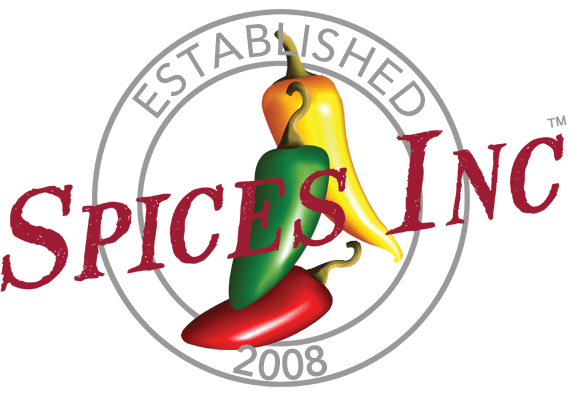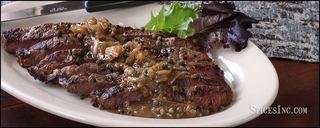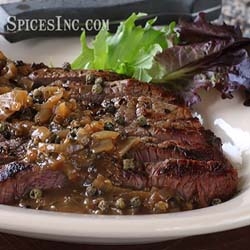Green Peppercorns
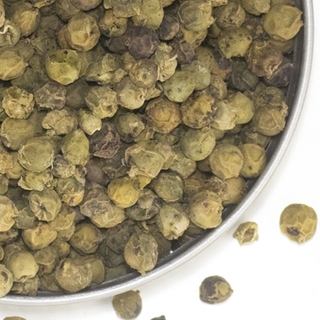
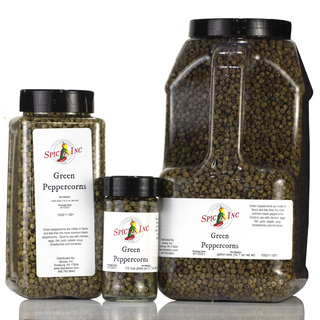


Green Peppercorns
Green Peppercorns, Piper nigrum, are also called green peppercorns, green pepper spice, green pepper corn, or dried green peppercorns. They have an essential oil content of up to 5% that is made up of mostly monoterpenes.
Green Peppercorns are cousins to to black peppercorns. They are both the unripe berry of the same vine and can be picked at the same time. Unlike the heat drying process used to produce black peppercorns, Green Peppercorns are plucked from the peppercorn vine and then boiled, washed with potassium sulfite to halt oxidation—which causes the peppercorn to turn black—and then freeze dried or dehydrated.
Green Peppercorns are popular with independent spice shops; olive oil shops; seasoning companies; food trucks; Middle Eastern and barbecue restaurants; and catering companies.
Please browse our pepper page to see the variety of pepper available.
Flavor Profile
Green Peppercorns have a lightly floral flavor and aroma, with brisk pepper-pine notes and an unobtrusive heat that quickly fades.
How To Use
Green Peppercorns can be used exactly like black peppercorns. Grind them up and use them in vegetable soup, on pasta dishes, or in sauces or stews. Their delicate, peppery flavor goes wonderfully when it’s ground on fruit, so try them over strawberries, apricots, or pineapple. You can rehydrate Green Peppercorns by letting them sit for an hour in the liquid of your choice. Once rehydrated, you can use Green Peppercorns to make a classic sauce for steak by sautéing with shallots, butter, and your favorite dry red wine. Try creamy Green Peppercorn Steak, which was inspired by a classic French recipe, Steak au Poivre.
Green Peppercorns are an aromatic version, less biting version of black peppercorns, and can be substituted wherever you used standard black pepper.
| Also Called | Green peppercorns, green pepper spice, green pepper corn, or dried green peppercorns |
| Species | Piper nigrum |
| Ingredients | Dried whole green peppercorns |
| Flavor Profile | Lightly floral, with brisk pine notes, unobtrusive heat that quickly fades |
| Oil content | Up to 5% |
| Recommended Uses | Anywhere black pepper can be used |
| Cuisine | Global |
| How To Store | Airtight container in a cool, dark place |
| Shelf Life | 1-2 years |
| Country of Origin | India |
Nutrition Facts
Serving Size1 tsp
Amount Per Serving
Calories4
% Daily Value*
Total Fat0g0%
Saturated Fat0g0%
Trans Fat0g
Polyunsaturated Fat0g
Monounsaturated Fat0g
Cholesterol0mg0%
Sodium0.7mg0%
Total Carbohydrate1.0g0%
Dietary Fiber0.4g2%
Total Sugars0.0g
Added Sugars0g0%
Sugar Alcohol0.0g
Protein0.2g0%
Vitamin D0mcg0%
Calcium7mg1%
Iron0mg2%
Potassium19mg0%
*The % Daily Value (DV) tells you how much a nutrient in a serving of food contributes to a daily diet. 2,000 calories a day is used for general nutrition advice. These values were calculated and therefore are approximate. For more accuracy, testing is advised.
